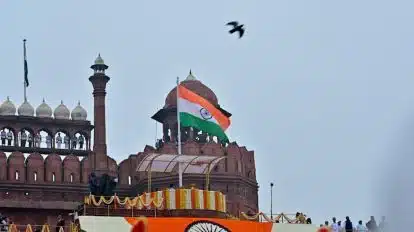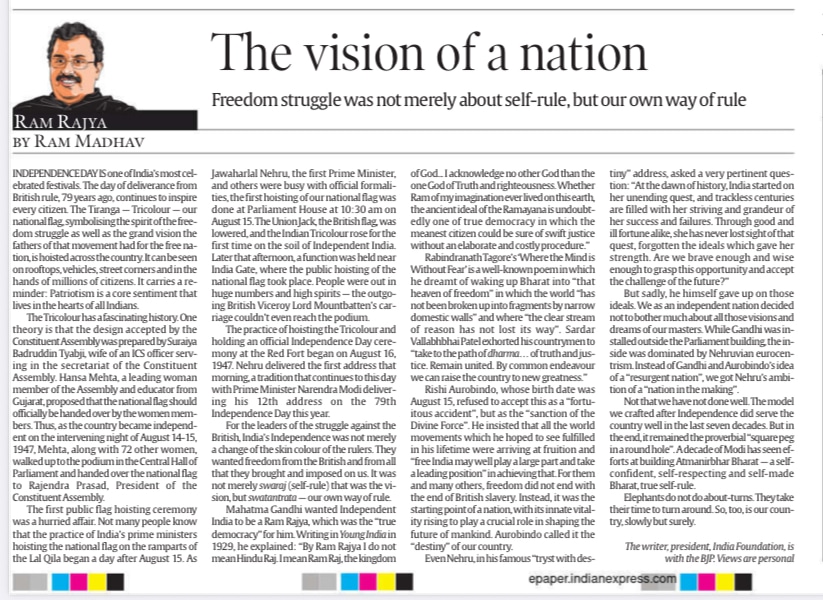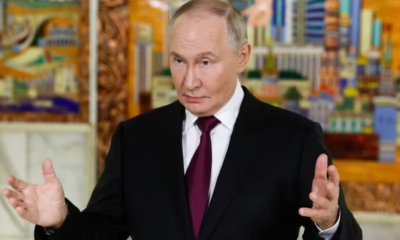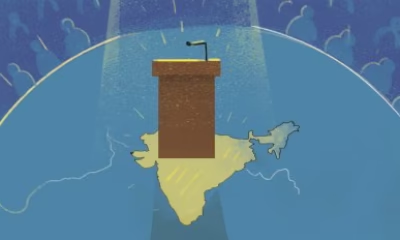
|
Getting your Trinity Audio player ready...
|
(The article was originally published in Indian Express on August 16, 2025 as a part of Dr Madhav’s column titled ‘Ram Rajya’. Views expressed are personal.)
Independence Day is one of the most celebrated festivals in India. The day of deliverance from British rule, 79 years ago, continues to inspire every citizen to this day. The Tiranga — Tricolour — our national flag, symbolising the spirit of the freedom struggle as well as the grand vision that the fathers of that movement had for the free nation, is hoisted across the country. It can be seen on rooftops, vehicles, street corners and in the hands of millions of citizens. It carries a reminder: Patriotism is a core sentiment that lives in the hearts of all Indians.
The Tricolour has a fascinating history. One theory is that the design that was accepted by the Constituent Assembly was prepared by Suraiya Badruddin Tyabji, wife of an ICS officer serving in the secretariat of the Constituent Assembly. A leading woman member of the Assembly, Hansa Mehta, an educator from Gujarat, proposed that the national flag should officially be handed over by the women members. Thus, as the country became independent on the intervening night of August 14-15, 1947, Mehta, along with 72 other women, walked up to the podium in the Central Hall of the Parliament and handed over the national flag to President Rajendra Prasad.
The first public flag hoisting ceremony was a hurried affair. Not many people know that the practice of India’s prime ministers hoisting the national flag on the ramparts of the Lal Quila began a day after August 15. As Jawaharlal Nehru, the first Prime Minister, and others were busy with official formalities, the first hoisting of our national flag was done at the Parliament House at 10:30 am on August 15. Union Jack, the British flag, was lowered, and the Indian Tricolour rose for the first time on the soil of Independent India. Later that afternoon, a function was held near India Gate, where the public hoisting of the national flag took place. People were out in huge numbers and high spirits — the outgoing British Viceroy Lord Mountbatten’s carriage couldn’t even reach the podium.
The practice of hoisting the Tricolour and holding an official Independence Day ceremony at the Red Fort began on August 16, 1947. Nehru delivered the first address that morning, a tradition that continues to this day with Prime Minister Narendra Modi delivering his 12th address on the 79th Independence Day this year.
For the leaders of the struggle against the British, India’s Independence was not merely a change of the skin colour of the rulers. They wanted freedom from the British and from all that they brought and imposed on us. It was not merely swaraj (self-rule) that was the vision, but swatantrata — our own way of rule.
Mahatma Gandhi wanted Independent India to be a Ram Rajya, which was the “true democracy” for him. Writing in Young India in 1929, he explained his idea of Ram Rajya as: “By Ram Rajya I do not mean Hindu Raj. I mean Ram Raj, the kingdom of God… I acknowledge no other God than the one God of Truth and righteousness. Whether Ram of my imagination ever lived on this earth, the ancient ideal of the Ramayana is undoubtedly one of true democracy in which the meanest citizen could be sure of swift justice without an elaborate and costly procedure.”
Rabindranath Tagore’s ‘Where the Mind is Without Fear’ is a well-known poem in which he dreamt of waking up Bharat into “that heaven of freedom” in which the world “has not been broken up into fragments by narrow domestic walls” and where “the clear stream of reason has not lost its way”. Sardar Vallabhbhai Patel exhorted the countrymen to “take to the path of dharma … of truth and justice. Remain united. By common endeavour we can raise the country to new greatness”.
Rishi Aurobindo, whose birth date was August 15, refused to accept as a “fortuitous accident”, but as the “sanction of the Divine Force”. He insisted that all the world movements which he hoped to see fulfilled in his lifetime were arriving at fruition and “free India may well play a large part and take a leading position” in achieving that. For them and many others, freedom did not end with the end of British slavery. Instead, it was the starting point of a nation with its innate vitality of the civilisational and cultural value system rising to play a crucial role in shaping the future of mankind. Aurobindo called it the “destiny” of our country.
Even Nehru, in his famous “tryst with destiny” address, asked a very pertinent question. “At the dawn of history, India started on her unending quest, and trackless centuries are filled with her striving and grandeur of her success and failures. Through good and ill fortune alike, she has never lost sight of that quest, forgotten the ideals which gave her strength. Are we brave enough and wise enough to grasp this opportunity and accept the challenge of the future?” he asked.
But sadly, he himself gave up on those ideals. We as an independent nation decided not to bother much about all those visions and dreams of our masters. While Gandhi was installed outside the Parliament building, the inside was dominated by Nehruvian Euro-centrism. Instead of Gandhi’s and Aurobindo’s idea of a “resurgent nation”, we got Nehru’s ambition of a “nation in the making”.
Not that we have not done well. The model we crafted after Independence did serve the country well in the last seven decades. But in the end, it remained the proverbial “square peg in a round hole”. A decade of Modi has seen efforts at building atmanirbhar Bharat — a self-confident, self-respecting and self-made Bharat — the true self-rule.
Elephants do not do about turns. They take their time to turn around. Our country too is, slowly but surely.




